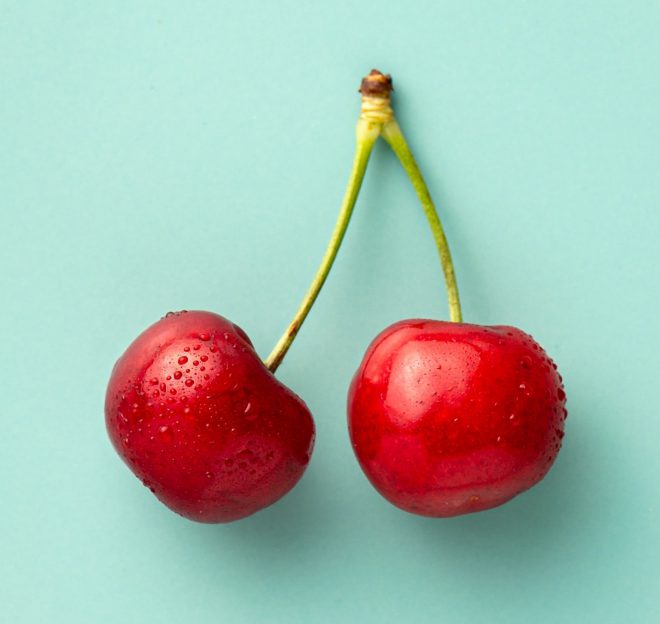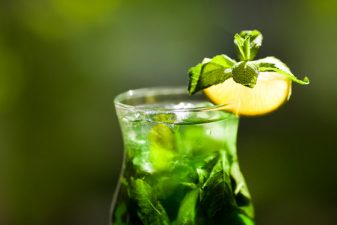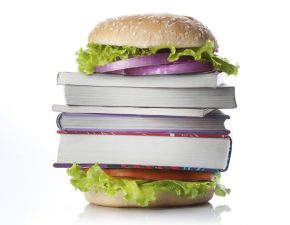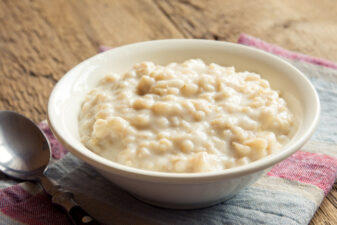Middle Eastern markets are bursting with the color and aromas of summer’s soft fruits. This is the guide to getting the most out of June.
Fruit: There are lots of honeydews and cantaloupes. Keep an eye out for heirloom melon varieties offered in Arab markets. Vendors will offer a fresh orange or green sliver, dripping with juice for you to taste, but don’t get carried away; test before you buy. A ripe melon’s stalk end should yield slightly to the finger, and the fruit should be firm, with a perceptible sweet aroma. However, if you’re buying with intention to serve melon in a day or two, an under-ripe one will ripen quickly in the Middle Eastern heat. Watermelons are always a risk, as far as I’m concerned. No matter how carefully I thump them, listening for the solid sound of a good ripe one, I won’t know if I’ve got a good one until I’ve cut it open.

Apricots are at their peak. Their season will end from one day the next, soon, so be sure to buy that extra kilo or two for preserving. Plums of many varieties have made their first appearance, and are already sweet. The little green sour plums mentioned last month are still in season, although ripening and turning purple now.
White and yellow peaches and nectarines are in full, glorious flush. How about the delicious geranium-scented cream to cover sliced peaches? It’s a deliciously different way to serve fruit.
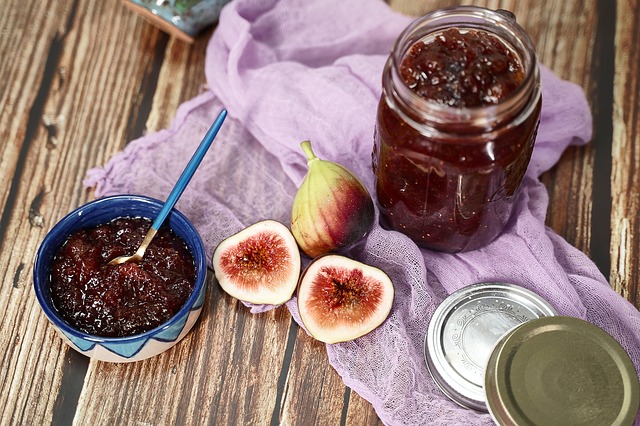
Kiwis from New Zealand are still present, although expensive. Bananas are very good and cheap right now. Fig season has just started, and you can find both black and green figs. Choose one of these delicious fresh fig desserts.
The promise of a good cherry crop came true. Prices are going down as the season advances, but take care: cherries left out in the heat of open-air markets – or left refrigerated in supermarkets – lose flavor. Taste before you buy. If you love cherries and find good ones, buy now for pickling, freezing, baking, preserving, or eating out of hand.
There are still bags full of green almonds. Avocados still linger, but are expensive and under-ripe. Avocados teach patience to those who must ripen them on kitchen counters. And craftiness in choosing a good one.
An avocado tip:
A tip I recently learned about choosing a good avocado: flick the tiny bump off the stem end. If the color underneath is yellowish-green, it’s a good avocado. If the little depression is dark, brown, or black, put it back in the bin; it’s most likely rotten.
Grapefruit, oranges, and lemons are still going strong. Grapes are sweet and worth buying, and you can still buy their lemony leaves to wrap fish in, or to line a pot of rice.
Vegetables: Tomatoes have come down in price and all the colors and sizes are already good. Some heirloom tomatoes may be found in Arab markets. Those excellent tomatoes are ridged and squat in shape rather than round, and may have dark-green streaks.
July is the month for a tomato glut, but if you have time and inclination, it’s already a good time to cook up lots of tomato sauce. Keep some for immediate use, and then cook part of it down to a thick, concentrated mass for freezing by quarter-cups – so handy for impromptu flavoring or quick sauces.
Broccoli is available, but often wilted and showing a yellow top. But cauliflowers are still good. Cabbages, sweet corn, string and wax beans are good too. Sweet corn is a summer favorite and its price is average now. Okra is available, although expensive. Kohlrabi, fennel, red radishes, beets, and bell peppers of every color are good, with average prices.
The root vegetables are still full and fat. Carrots, celeriac, parsley root, and especially red and white potatoes continue excellent.

Cucumbers and eggplants are good, but already feeling the heat. Buy in the cooler early hours of the day to get the best ones. Now is the time for different eggplant varieties, like the ridged baladi (wild variety) for baba ganoush and small ones for pickling or stuffing.
You may still find fresh, green chickpeas with their flavor like that of green peas. Some open-air markets sell them roasted, as a snack.
Pale-green squashes, dark zucchini and pumpkins continue firm and flavorful. You may catch this year’s second artichoke crop, which is scanty but offers good-sized ‘chokes. Onions have finally gotten over the winter doldrums and are big and firm, with healthy golden peels and no more sprouts.
Herbs: The familiar herbs are in full evidence, with the exception of basil, which is available but looking sad. Last month’s list still serves: parsley, coriander leaf, chives, celery, and scallions. As in last month, sorrel, tarragon, wormwood, Swiss chard, and leeks are out on the stands. Many varieties of lettuce have appeared: romaine, iceberg, and ruffled green and purple lettuces are the most popular. Asparagus is back, as are endives.
Another seasonal treat is Jerusalem Sage, a broad leaf that’s excellent for stuffing with rice. And melochia’s season is now. Make some soup! As noted last month, rinse and hang up any melochia leaves you’re not using, for future use.

Melokhia or melochia, known in English as jute. Makes a good Egyptian soup.
Forager’s notes: St. John’s Wort (Hypericum perforatum, known also as perforate) is blooming now, for those who know how to dry it or even better, tincture it, for medicine.
Purslane is strong, healthy, and sprouting up everywhere (see our purslane recipe here).
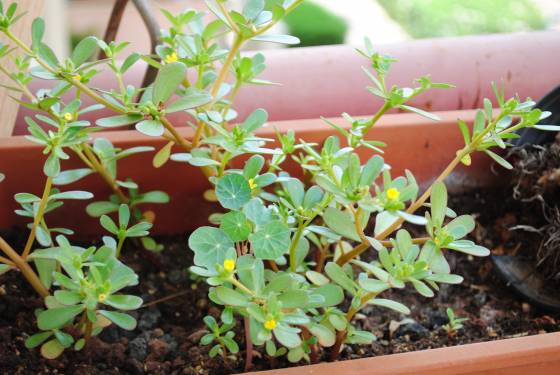
Knotweed (polygonum multiflora) is an almost invisible weed whose aerial parts make an excellent skin-soother and facial rinse as tea. Capers are blooming now. Pick the tightly-closed buds and cucumber-like fruit for pickling if you’re brave enough to withstand the thorns.
A lovely thing to do with caper buds with a white streak showing that the flower inside is almost ready to burst forth: put them in a little bowl of water. They will open in a few hours and look like white and purple butterflies floating. Gather enough of them to enjoy their faint, sweet scent.
Some white mulberry trees are still bearing fruit, especially in the hilly regions. Both red and white mulberries are still putting forth new leaves. Young, tender mulberry leaves are good to wrap lamb or chicken patties in, or to dry as a tea. Tea of dried mulberry leaves is said to control blood sugar. Be aware: fresh mulberry leaves are slightly toxic and must be cooked or dried before use.

Mulberries, plucked fresh from the tree. Too tender to transport, you won’t find these in any markets.
Broad-leaved chicory, known as olesh in some places, may be found wild, although some Arab markets also sell it. Elecampagne, with its pungent odor and yellow flowers, is now sprouting and flowering. Elecampagne, or Inula, has strong anti-microbial properties and may be used as a field poultice or as a wash to keep wounds from becoming infected. It’s said that the Bedouin have over 40 uses for elecampagne. If you want to know more about Bedouin folk medicine, follow the link here from our writer in Jordan.
Delicious things you can do with Junes’ produce:

